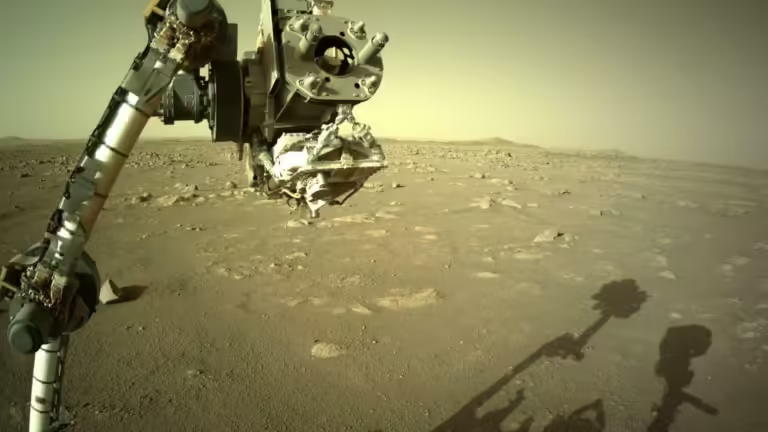A car-sized NASA rover, weighing more than a ton, climbs the crater’s walls.
The space agency has announced that Perseverance, a robotic rover currently searching for signs of past life on Mars, will embark on the next phase of its Mars exploration. But first it must escape Jezero Crater, an area once home to thriving rivers and vast lakes. That won’t be easy.
NASA said in a statement that the journey “will involve some of the steepest and most challenging terrain the rover has ever encountered.”
Scientists discover origin of giant asteroid that wiped out the dinosaurs
The rover captured images of the climb it was about to make, which included a 23-degree incline as it climbed 1,000 feet. There are no roads on Mars, so the easiest route will necessarily involve traversing rough, rocky terrain.
The robot traverses the route between two hills shown below.
Mashable Lightspeed

The Perseverance rover will climb the wall of the crater ahead of it, ascending to an altitude of 1,000 feet.
Credits: NASA / JPL-Caltech / ASU / MSSS
The tweet may have been deleted
Mission scientists are eager to reach the top of Jezero Crater, where water once flowed and where hydrothermal activity — a process that produces hot groundwater and steam — may have caused fissures in the earth long ago.
“These rocks formed through a variety of processes, some of which may have represented ancient, habitable environments that have never been explored in detail before,” Eleni Labanis, a member of the Perseverance rover team, said in the agency’s statement.
NASA is interested in exploring areas of Mars that were once habitable environments (environments warm enough for liquid water to exist) because those areas may preserve evidence of past microbial life, which could mean telltale molecules or features formed by biological processes.
The space agency said the rover has already recently discovered “chemical signatures and structures that could have been formed by life billions of years ago,” but to prove this it needs to bring samples back to Earth.
Over the next few months, the robot will transmit data from space recording the triumphs and tribulations of the upcoming, challenging Mars mission.

